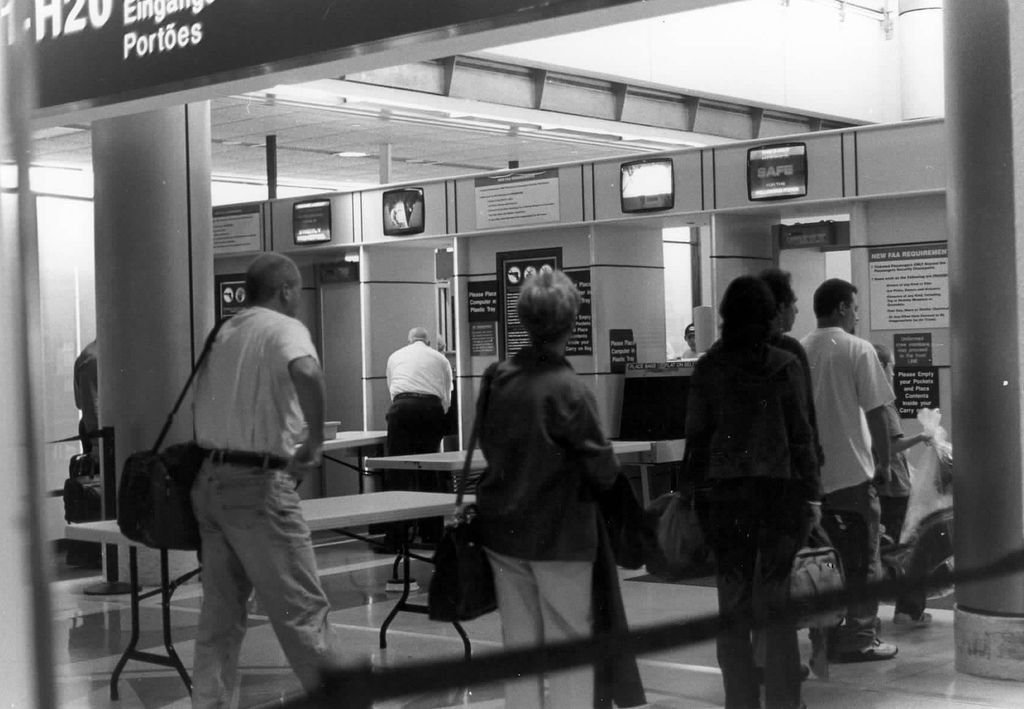REAL ID Standard Implementation At Airports To Start January 2018
Hundreds of thousands of residents in five states and one U.S. territory will receive a two-year reprieve from having to use an additional form of identification when going through airport security, as the Department of Homeland Security extended the deadline for state drivers licenses to meet REAL ID standards.
Homeland Security secretary Jeh Johnson announced on Friday a schedule for the final phase of implementation of minimum security standards for state-issued driver’s licenses and photo IDs.
Effective Jan. 28, 2018, air travelers with a driver’s license or identification card issued by a state that does not meet the requirements of the REAL ID Act must present an alternative form of identification acceptable to the Transportation Security Administration in order to board a commercial domestic flight.
Of course, the Dept. also provided some exceptions, noting that if a state has been granted an extension to comply with the Act, the effective date may not apply.
Currently, 23 states are fully compliant with the REAL ID Act, and the Department has used its authority to grant states extensions when they demonstrate steps toward compliance. The remaining 27 states and territories have been granted extensions for a period of time to become compliant.
Six states and territories – Illinois, Minnesota, Missouri, New Mexico, Washington, and American Samoa – are noncompliant and do not currently have extensions.
With the release of the timeline, these states and territories will receive a defacto extension until 2018.
The requirements under the Act have been hotly debated in many states, with some claiming the law violates consumers’ privacy, even passing laws barring motor vehicle departments from complying with the law.
Under the standards, licenses are required to be equipped with “machine readable” technology, like a chip or a magnetic strip, to store residents’ personal information.
The information will eventually be shared through a system administered by the American Association of Motor Vehicle Administrators, allowing states to access information from other states.
While the federal government can’t force states to adopt identification standards, it can force their hands in other ways, mainly determining that current IDs aren’t sufficient enough to pass through airport security.
If state IDs fail to comply with REAL ID standards, federal agencies can’t accept them as standalone proof of identification. The final phase of the DHS plan is access to commercial aircraft.
The Department’s timeline is as follows:
• Effective immediately: The Department of Homeland Security will conduct outreach to educate the traveling public about the timeline below, and continue engagements with states to encourage compliance with REAL ID standards.
• Starting July 15, 2016: TSA, in coordination with airlines and airport stakeholders, will begin to issue web-based advisories and notifications to the traveling public.
• Starting December 15, 2016: TSA will expand outreach at its airport checkpoints through signage, handouts, and other methods.
• Starting January 22, 2018: Passengers with a driver’s license issued by a state that is still not compliant with the REAL ID Act (and has not been granted an extension) will need to show an alternative form of acceptable identification for domestic air travel to board their flight.
• Starting October 1, 2020: Every air traveler will need a REAL ID-compliant license, or another acceptable form of identification, for domestic air travel.
Want more consumer news? Visit our parent organization, Consumer Reports, for the latest on scams, recalls, and other consumer issues.


